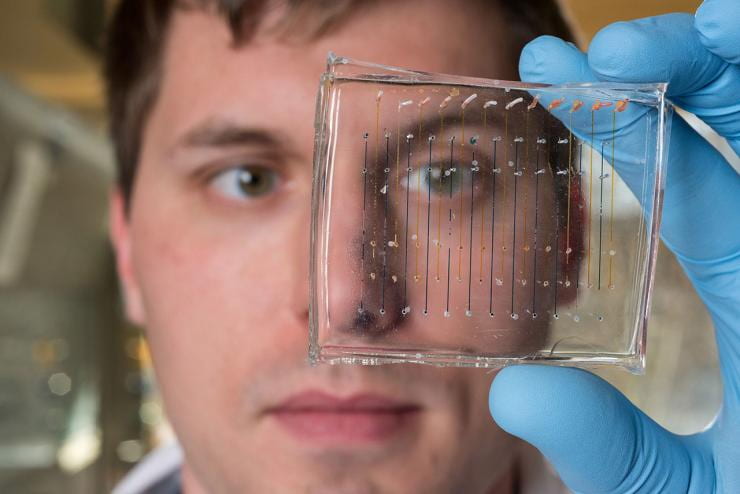
Researchers use DNA “barcodes” to develop new technique for rapidly screening nanoparticles
Using tiny snippets of DNA as “barcodes,” researchers have developed a new technique for rapidly screening nanoparticles for their ability to selectively deliver therapeutic genes to specific organs of the body. The technique could accelerate the use of gene therapies for such killers as heart disease, cancer, and Parkinson’s disease.
Genetic therapies, such as those made from DNA or RNA, are difficult to deliver into the right cells in the body. For the past 20 years, scientists have been developing nanoparticles made from a broad range of materials and adding compounds such as cholesterol to help carry these therapeutic agents into cells. But the nanoparticle carriers must undergo time-consuming testing — first in cell culture, then in animals. With millions of possible formulas, identifying the optimal nanoparticle to target each organ has been challenging.
Using DNA strands just 58 nucleotides long, researchers from Georgia Tech, the University of Florida, and the Massachusetts Institute of Technology (MIT) have developed a new evaluation technique that skips the cell culture testing altogether — and could allow hundreds of different types of nanoparticles to be tested simultaneously in just a handful of animals.
Read the entire story in Research Horizons.
Release Date: Monday, October 9, 2017
